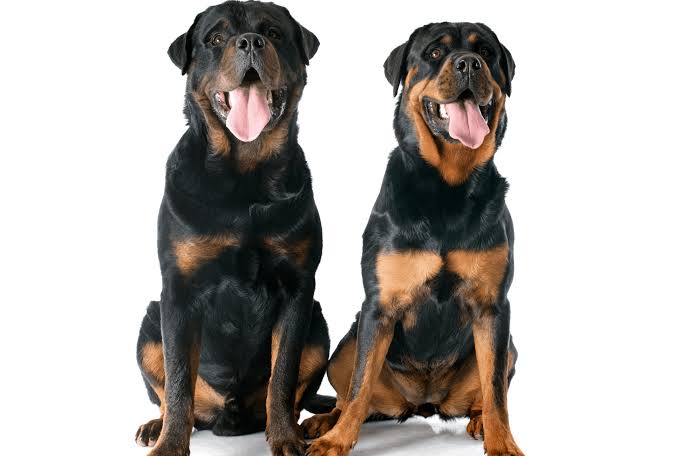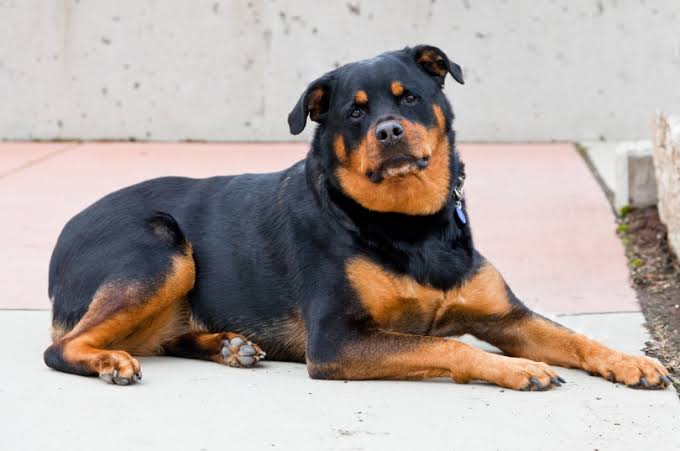
The cost of a Roman Rottweiler may differ greatly, ranging from $1,000 to $5,000. This difference is caused by several factors, including the breeder’s reputation, location, lineage, and breed rarity. In India, a Roman Rottie costs between ₹22,000 to ₹40,000. It’s worth noting that these dogs are far rarer than German Rotties, and only a few breeders may have them available.
Price Comparison: Roman Rottweiler and German Rottweiler

When comparing the cost of Roman Rottweilers to German Rottweihttps://rottweilerscare.com/category/blog/lers , Roman Rottweilers are often more expensive. A Roman Rottweilers often costs between $1,000 and $5,000, although a German Rottie costs less than $2,500. The price difference between Roman and German Rotties can be assigned to their rarity and accessibility. It is crucial to remember that these are average pricing, and actual costs will vary depending on breeder repute, location, bloodline, and dog registration.
Roman Rottweiler :
The term “Roman Rottweiler” refers to a larger, mastiff-like variant of the standard Rottie that is thought to have followed Roman legions, herding cattle and acting as guard dogs. Today, the Roman Rottie is not a unique breed, but simply an honorific title referring to the Rottie’s historic and prominent lineage. These dogs are recognized for their power, loyalty, and intelligence, and with proper training and socialization, they can be excellent guard dogs and family pets.
If you’re thinking about obtaining a Roman Rottweiler, you should look for a reputable breeder and be prepared to handle the duties that come with having a huge and protective breed.
Physical Features of Roman Rottweiler :

Roman Rotties are recognized for their large size and strength. Here are some of their physical attributes:
Males typically stand at least 26 inches (67 cm) tall, while females stand at least 24 inches (63 cm). Larger males can reach 30 inches (76 cm), while females can reach 29 inches (74 cm).
Weight varies by gender and size, but can range from 85 to 130 pounds (38.5 to 59 kg).
Lifespan: Roman Rottweilers often live from 10 to 14 years.
Coat Colors: Their coats are typically black with tan or mahogany markings.
They have a powerful and muscular physique, with a big chest and strong legs.
Head: The head is huge and slightly rounded, with a broad muzzle,
These dogs are not only physically difficult, but also intelligent and protective, making them superb guard dogs and devoted family members when properly taught and socialized.
What temperament do Roman Rottweilers have?
Roman Rotties are regarded for being protective, calm, and sociable. They are extremely intelligent and attentive, making them ideal security dogs. With proper training and socialization, they can be affectionate pets to their families, although they may remain wary and apprehensive of strangers. They thrive as working dogs and do well with constant training. They can make good guard dogs and friends for families if they are trained and socialized from a young age to understand their role in the family and community.
origin
The Rottie breed has a long history, dating back to the Roman Empire. The forebears of today’s Rotties were most likely Roman drover dogs, strong and loyal mastiff-type canines used by Roman armies to herd and protect animals as they marched across Europe. These dogs were prized for their power, dependability, and protective nature.
As the Romans moved, they arrived at what is now South Germany, where the town of Rottweil was finally established. The dogs they brought with them were essential to the local cattle trade and were known as “Rottie Metzgerhunds,” or Rottweil butcher dogs, because they frequently guarded the butchers’ money sacks and drove livestock to market.
Over time, these dogs were bred with local German canines, resulting in the evolution of the Rottie we know today. The term “Roman Rottie” is often used to refer to a larger variety of the breed, resembling the original dogs that followed Roman armies. However, this word is more honorary than a breed designation, emphasizing the breed’s ancient lineage and historical significance.
health
Roman Rotties are typically healthy dogs, but like all breeds, they are susceptible to specific health problems. Some common health concerns for Roman Rotties are:
Hip and Elbow Dysplasia is a hereditary disorder in which the hip or elbow joints do not fit together properly, resulting in arthritis or disability.
Bloat, also known as stomach torsion, is a potentially fatal illness that affects huge, deep-chested breeds such as Rotties. It occurs when the stomach twists on itself, trapping air, food, and water within.
Rotties’ floppy ears make them prone to ear infections, which should be checked and cleaned on a regular basis to avoid problem.
A Roman Rottie’s health depends on frequent veterinary check-ups, a good nutrition, and appropriate activity. It’s also a good idea to work with a respected breeder who screens their breeding dogs for common health conditions.
What kind of diet works best for this breed?
A Roman Rottweiler ‘s balanced diet should include the following:
High-quality proteins are essential for muscle growth and overall health. Look for foods with protein as the first ingredient, such as chicken, beef, fish, and turkey.
Healthy fats are critical for skin and coat health, as well as overall well-being. Fish oil and flaxseed are good sources of omega-3 and omega-6 fatty acids.
Complex carbs supply energy for daily tasks. Whole grains, sweet potatoes, and peas are all good choices.
Essential vitamins and minerals: Ensure that the diet contains a variety of nutrients such as calcium, phosphorus, vitamins A, D, and E1.
Fiber is essential for digestive health, and sources include beet pulp and pumpkin.
There are no artificial additives: Avoid foods with artificial colors, flavors, or preservatives, as these might cause allergies and other health difficulties.
Size-specific formula: Large breeds have varied nutritional requirements, so choose dog food that is intended for them. Some brands have Rottie-specific formulations.
The average nutrient ratio for a Rottie’s diet should be:
Protein: 30-40%.
Healthy fats: 15%-20%
Carbs: 30–50%
Remember that each dog is unique, so check your veterinarian about the ideal diet for your Rottie.
conclusion
In conclusion, the Roman Rottwhttps://rottweilerscare.com/category/blog/eiler is a larger version of the traditional Rottie with historical roots in the Roman Empire. They are strong, intelligent, and protective dogs who may make wonderful family pets with proper training and socialization. They are generally healthy, but can be prone to problems such as hip dysplasia and bloat, therefore regular veterinary treatment is recommended. A balanced diet adapted to the needs of large, energetic dogs is critical for their health. With proper care, training, and nutrition, a Roman Rottie may be a devoted and loving addition to the right family. Always consult with professionals, like as breeders and veterinarians, to ensure that these wonderful dogs receive the best care possible.